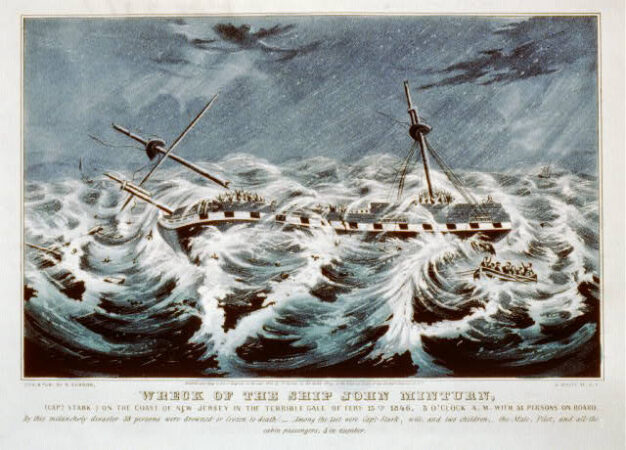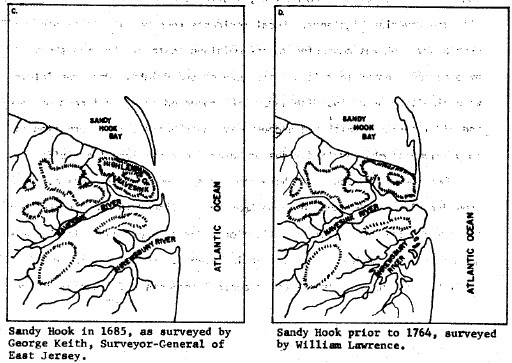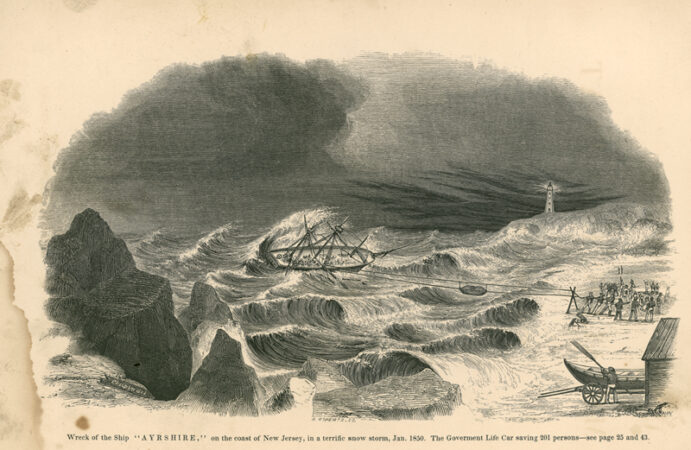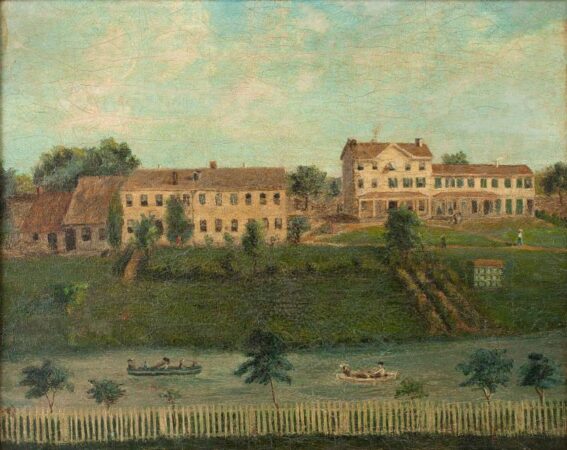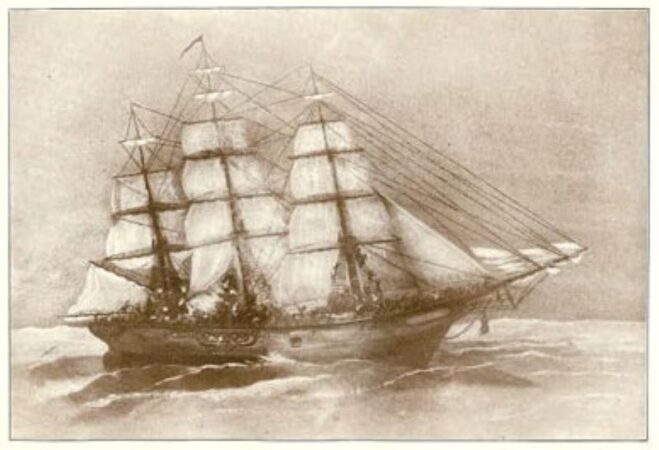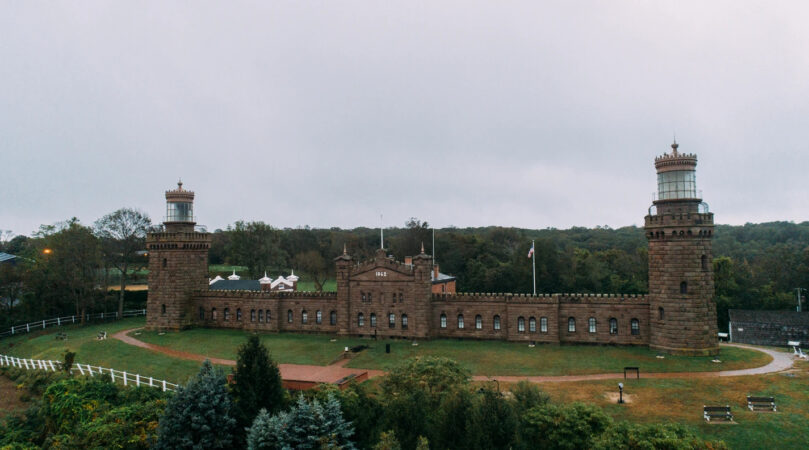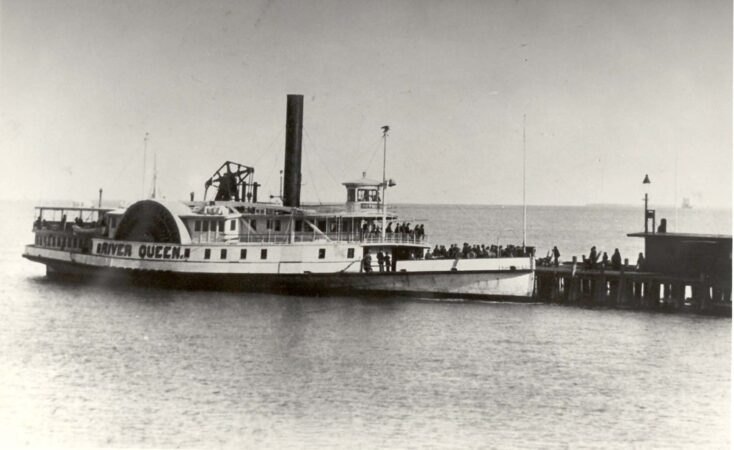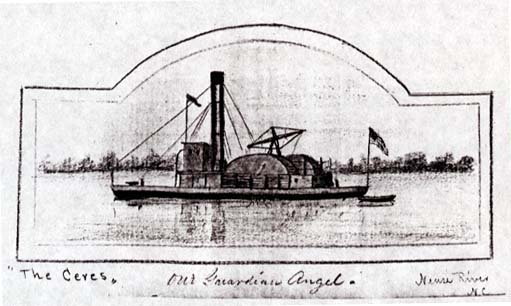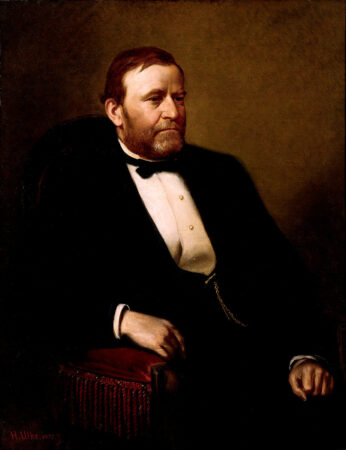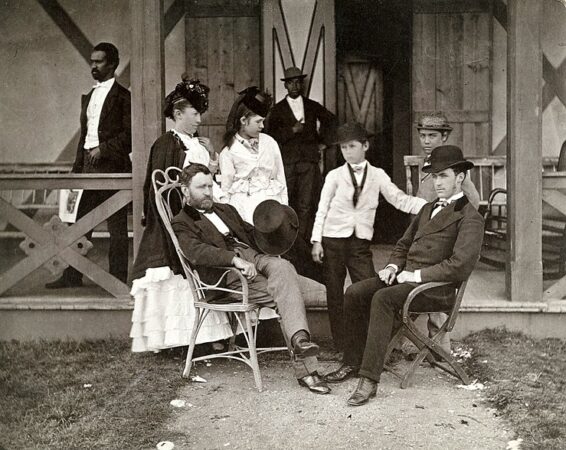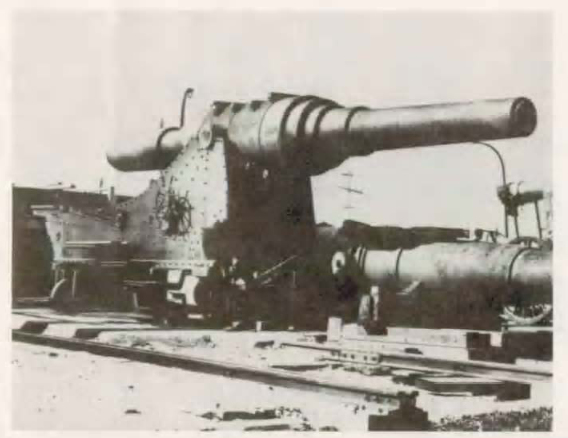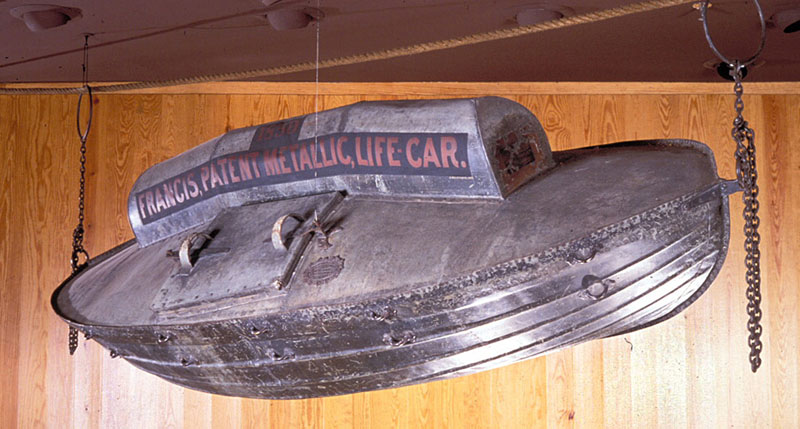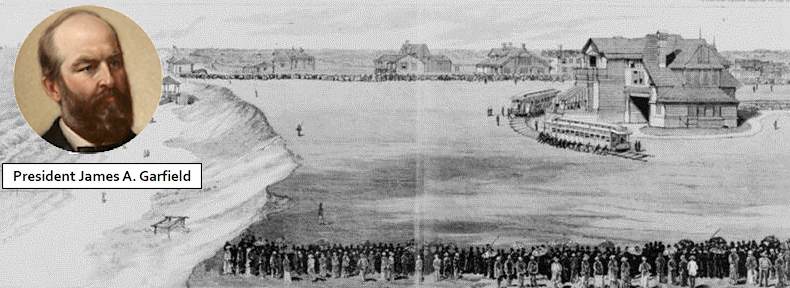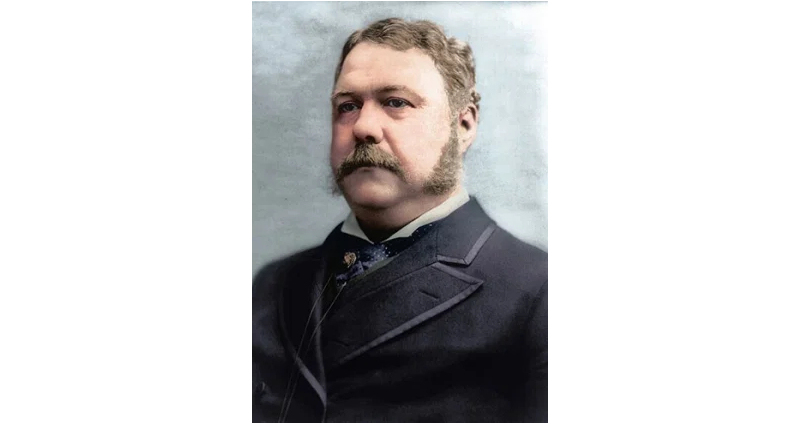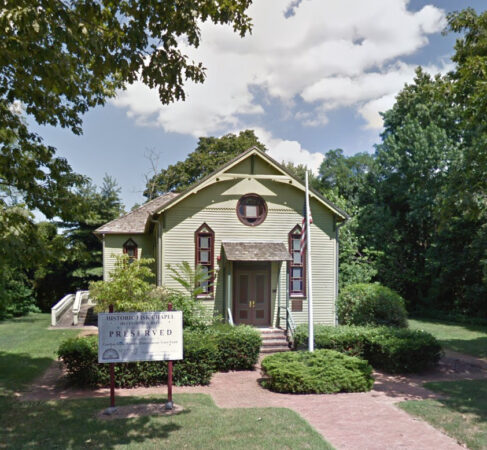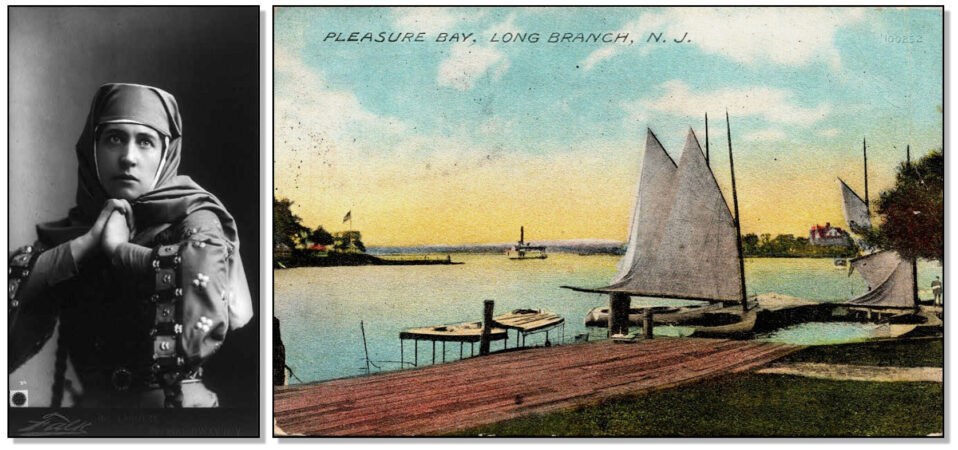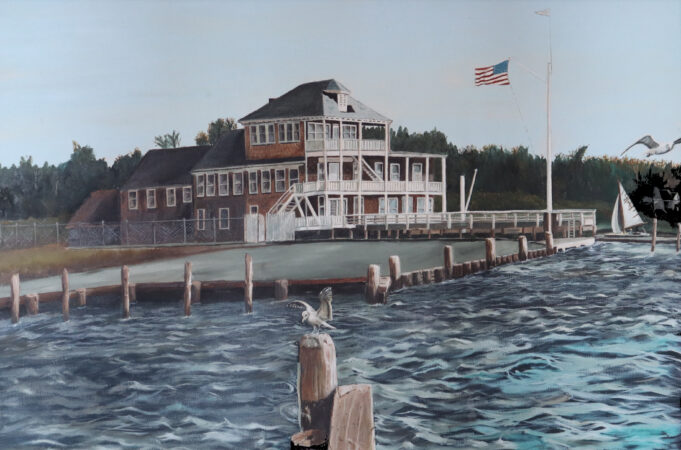Monmouth County Timeline
February 15, 1846
The Wreck of the John Minturn: A Horrible Tragedy Implicates, but then Vindicates the Wreckers of Monmouth County and Inspires the First Federal Funding for Life-Saving Services
On February 15, 1846, a severe storm caused a number of horrifying shipwrecks along the northeast coast that were a shock even to a nation long accustomed to maritime disasters. One of these was the John Minturn, a three-masted packet...
July 8, 1848
The Shrewsbury Inlet Closes – For Good
On July 8th, 1848, the Shrewsbury Inlet closed for the last time, converting Sandy Hook from an island back to a peninsula for good. Over the decades, storms and shifting sands resulted in the inlet closing and reopening several times....
January 12, 1850
Monmouth County’s Wreck-Master Comes to the Rescue of the Doomed Ayrshire
The early life-saving stations from Sandy Hook to Egg Harbor were for the use of paid officers called "commissioners of wrecks," or "wreck-master," who were responsible for leading and coordinating marine rescue and salvage efforts. These men received about $200...
August 22, 1851
The Courage, Skill, and Sacrifice of the Sandy Hook Ship Pilots
Editor’s note: This article would not have happened were it not for the diligence and professionalism of a dedicated librarian, Caitlyn Cook, at the New Jersey State Library in Trenton. Ms. Cook was helping with my research on the wreckers...
September 10, 1854
Experimental Utopian Communities: The North American Phalanx
On September 10, 1854, a fire swept through the North American Phalanx, destroying its vital mill, ending the experiment in secular utopian socialist commune life. [caption id="attachment_1616" align="aligncenter" width="1280"] Exterior view of the main residential edifice of the North...
November 13, 1854
240 Drown as The New Era Sinks off Deal Beach
On November 13, 1854, the New Era, a three-masted square-rigged commercial ship, was blown onto the shoals of Deal Beach in heavy weather. Efforts from nearby boats as well as wreck-masters from life-saving stations proved futile, with crew members saving...
May 1, 1862
The New Twin Lights at Navesink
On May 1, 1862, the lamps of the new lighthouse, Twin Lights at Navesink, were lit for the first time. The original Twin Lights of Navesink were first lit in 1828. By 1857, the original structure had fallen into disrepair....
March 31, 1864
SS River Queen, Revered Presidential Vessel of the Civil War
On March 31, 1864, the steamship SS River Queen, one of numerous side paddlewheel steam-powered vessels built in Monmouth County in the years prior to the Civil War, was launched by Benjamin C. Terry in Keyport. When launched, the River...
May 5, 1864
USS Ceres – The Little Tugboat That Became A War Hero
The Ceres was a 144-ton side-wheel steam-powered tugboat built at the Keyport shipyard of Benjamin C. Terry in 1856, one of nine vessels built by Terry that served in the Civil War. Originally a commercial tugboat working New York Harbor, the...
July 19, 1869
Ulysses S. Grant Makes First Long Branch Visit as U.S. President
On July 19th, 1869, U.S. President Ulysses S. Grant, after just months in office, visited Long Branch with his family for the first time, and found it to his liking. He and his family left Washington, D.C., on July 15th,...
August 3, 1871
U.S. President Grant Invests in Jersey Shore Real Estate
On August 3, 1871, U.S. President Ulysses S. Grant purchased a cottage in the Elberon section of Long Branch, where he spent his summers during his presidency and beyond. [caption id="attachment_1773" align="aligncenter" width="983"] Ulysses S. Grant Cottage, 995 Ocean...
August 7, 1874
Sandy Hook Proving Ground
On August 7, 1874, U.S. Secretary of War William W. Belknap approved establishment of a proving ground at Sandy Hook for the testing of new long-range weapons. The need for such facilities had been felt for years, and became urgent...
June 18, 1878
The Evolution of the U.S. Life-Saving Service
On June 18, 1878, Congress passed a new law that created the U.S. Life-Saving Service as a part of the Treasury Department. Prior to then, it was included within a long-gone bureau of the federal government known as the...
September 19, 1881
U.S. President James A. Garfield Dies in Elberon
On September 19, 1881, U.S. President James A. Garfield died in Long Branch, exactly two months before his 50th birthday. He had asked to be brought to Long Branch in the hope that the fresh air and quiet might aid his...
September 20, 1881
Chester A. Arthur Visits James Garfield’s Widow
On Tuesday, September 20, 1881, U.S. Vice President Chester A. Arthur was sworn in as the 21st President of the U.S. Arthur succeeded James A. Garfield, who was shot by an assassin in Washington, D.C., in July, and was eventually...
August 20, 1882
Bicentennial Hall, formerly Fisk Chapel, the African Methodist Episcopal Bethel Church of Fair Haven
Bicentennial Hall is the oldest building in Fair Haven. It was originally called Fisk Chapel, also known as the African Methodist Episcopal (A.M.E.) Bethel Church. It is the oldest religious edifice still in use on the Rumson peninsula, and one...
October 22, 1882
When Bernard Baruch Met Lillie Langtry on Pleasure Bay
By John R. Barrows This vignette is just another of the many in which people not of, nor from our region, expressed the great pleasure they experienced visiting our area. On October 22, 1882, the S.S. Arizona arrived in...
March 20, 1883
Monmouth Boat Club – A National Historic Site
On March 20, 1883, The New York Times announced that the Monmouth Boat Club (MBC) “...have purchased a handsome site on the Shrewsbury River, 30 x 160 feet, adjoining their current club-house, and its members have subscribed money sufficient to...
March 5, 1886
Samuel Johnson, Victim of a Lynching
Thousands of Black people were the victims of racial terror lynching in the United States between 1865 and 1950, including hundreds of lynchings that took place outside the South. Violent resistance to equal rights for African Americans led to fatal...

